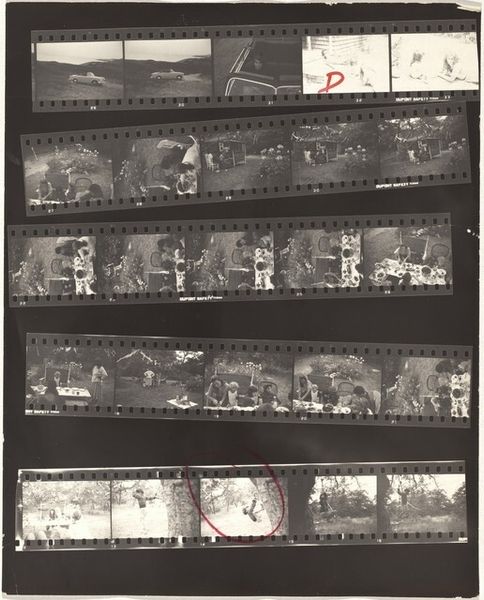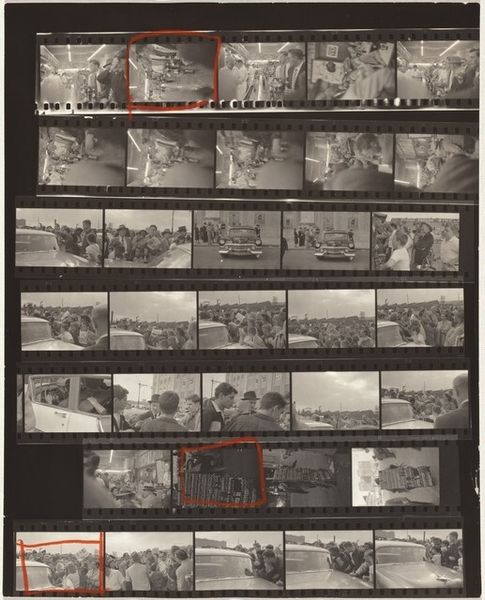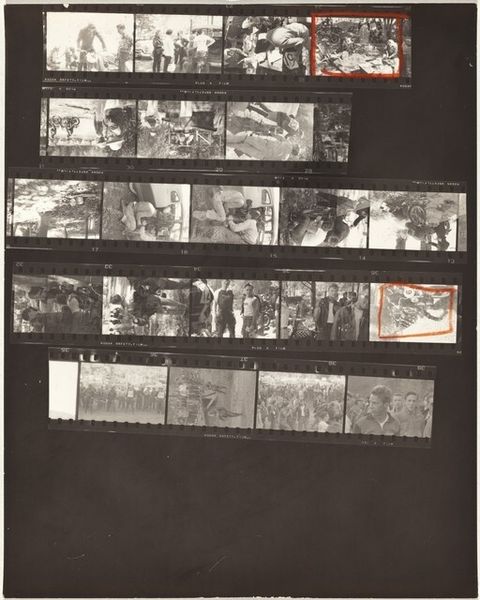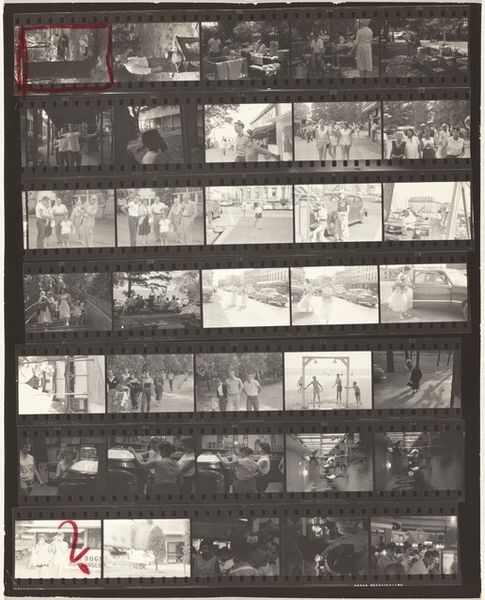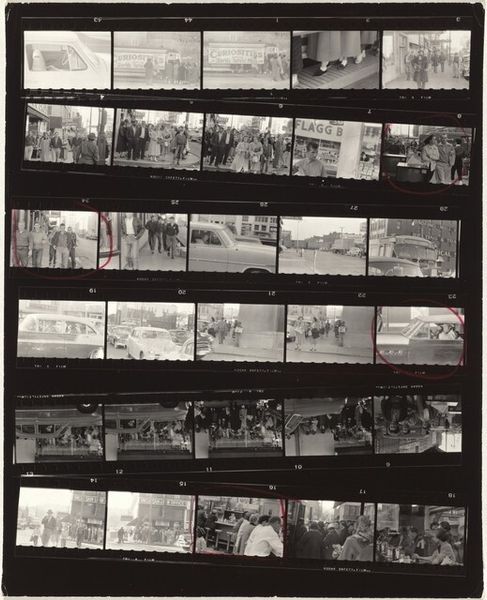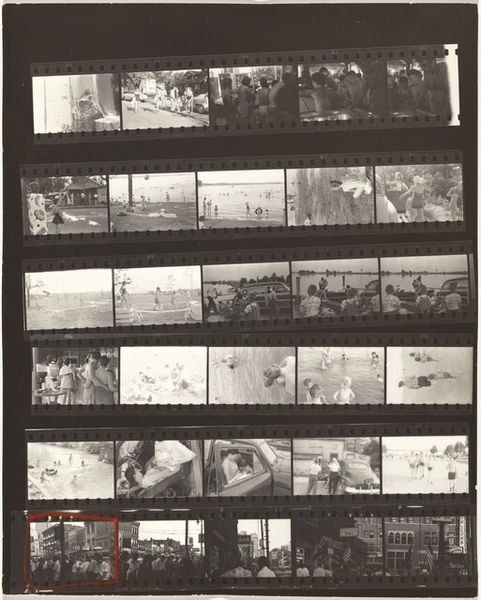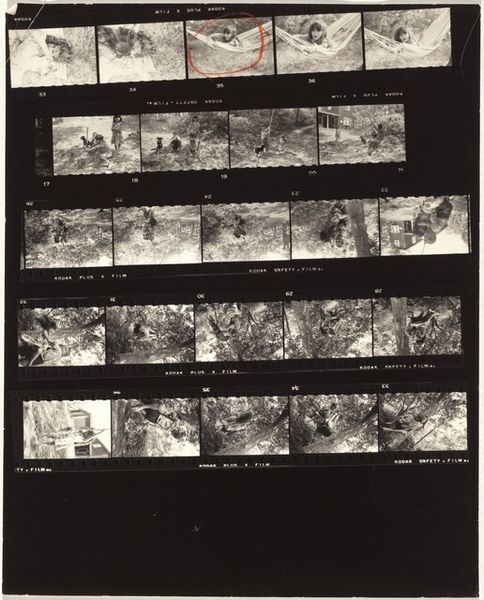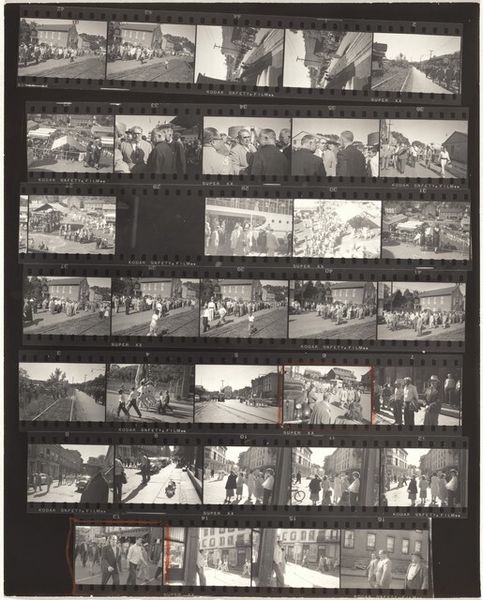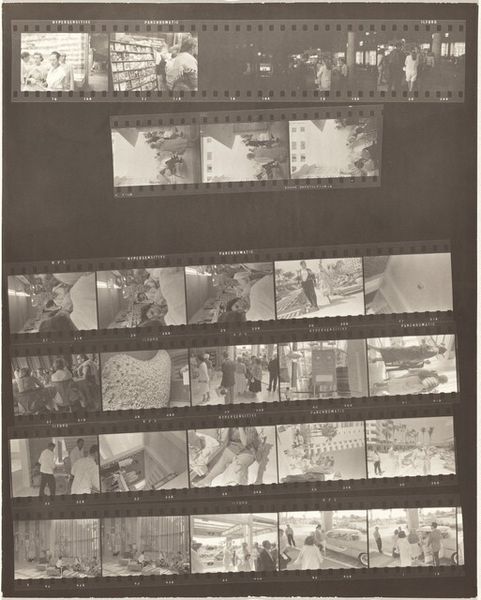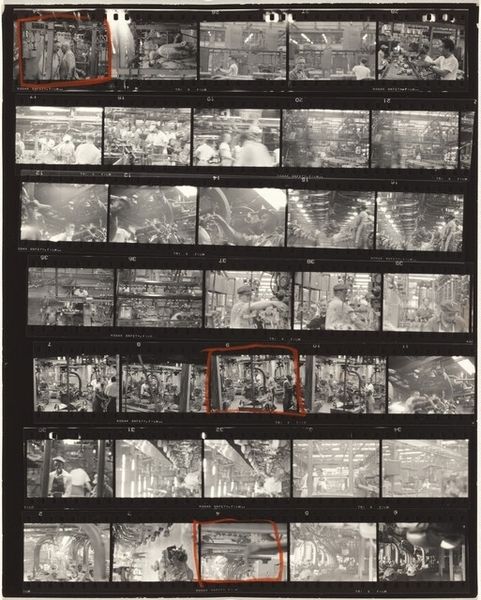
Dimensions: sheet: 25.2 x 20.2 cm (9 15/16 x 7 15/16 in.)
Copyright: National Gallery of Art: CC0 1.0
Curator: Robert Frank's "I am an American' Day no number," created in 1957, is a gelatin silver print that visually unpacks notions of American identity. It is organized into strips with little photos developed from a roll of film. Editor: What immediately strikes me is the contrast—the grit of the materials used for mass-produced pictures meeting the grand idea of a national holiday. There's an inherent friction there that begs for unpacking. Curator: Indeed, this work invites scrutiny of that relationship. These images stem from the socio-political landscape of mid-20th century America. Frank was Swiss and new to the States, and that outsider perspective shapes his observations. What does "American" even mean in an environment of rapidly emerging capitalism and post war identity shifts? The "I Am An American Day" events were crafted, very deliberate constructions of civic virtue and national cohesion. Editor: Right. And the technique speaks volumes. Gelatin silver prints—easily reproducible, meant for mass consumption, echoing the sentiment of Americanism being accessible, performative, even. It’s all manufactured, the signs themselves tell you it is for "Citizenship Day," and the images themselves are serial, implying the ubiquity of such celebrations in post-war America. Curator: Yet the stark black and white palette, the rough composition... It deviates from the saccharine imagery typically associated with national pride at the time. What about the repetitive use of those signs? What are they meant to signify within the context of a picture reel that otherwise captures ordinary everyday activities in a public park? Editor: To me, those images featuring the signs scream about the labor of creating national identity. It isn’t organic; it’s fabricated and deliberately consumed. You see these signs over and over again—a redundancy, a visual pressure almost. What’s the price of feeling and believing in an identity being advertised like a product? Curator: It forces us to contemplate who is included, and perhaps more importantly, who is excluded from this constructed vision of American identity. It certainly disrupted notions of American photojournalism and how national identity was portrayed. Editor: Precisely, and by showing the labor behind the imagery—the raw material, the roll of film—he is able to point to the seams of this American image construction and urge his viewers to ask who this version of Americanism is really serving. Curator: A complex snapshot indeed! Editor: Absolutely! And the image certainly invites repeated viewing.
Comments
No comments
Be the first to comment and join the conversation on the ultimate creative platform.

